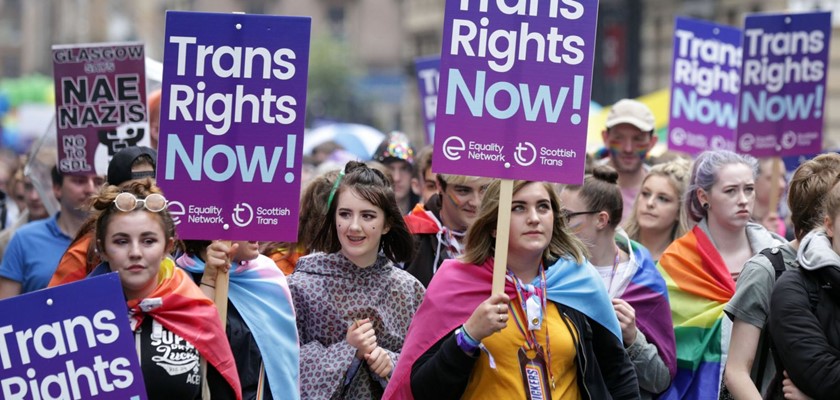
For Trans Day of Visibility 2023, our Health Improvement Manager Oliver revisits his article reflecting on what it means to be visible in an increasingly transphobic society.
Looking back on the blog post I wrote a year ago for Trans Day of Visibility 2022 – available to read below – a lot of it still rings true. I believe in visibility and the importance it has for our community, but the risks of visibility have not gone away.
There have been some strides made for trans people this year, like the passing of the Gender Recognition Reform Bill in Scotland. But it feels like every time we take a step forward, we are once again pushed back. The bill wasn’t perfect, but it would have brought about several positive changes for trans individuals and signalled support for the trans community from the Scottish Government; but the UK Government blocked the bill less than a month later.
Writing this only a few weeks after the murder of Brianna Ghey, it’s hard not to have a bleak outlook. Trans people in the UK are still in the trenches of legal recognition and reform, as well as social attitudes. But it does give me hope to know that despite this there are countless trans people who continue to be visible in their own ways, and allies and organisations who are continuing to fight for trans rights even when it gets tough.
I encourage all allies of the trans community to make time for your own reflections on visibility today. Consider what it’s like for a trans person to be visible in the current climate. And support the trans people in your life, so that we all have the freedom to be visible without fear.
Reflections on Visibility
March 31st is Trans Day of Visibility (TDoV), a day created to celebrate trans and non-binary people, and to raise awareness about the disproportionate discrimination we face. TDoV is an opportunity for trans people to share their thoughts on visibility, something I want to do today.
I’m Oliver, a Health Improvement Manager at Waverley Care. I use he/him pronouns, and I’m a trans man.
The visibility of other trans people was monumental in my own coming out process. One of the biggest barriers that prevented me from realising my trans identity was the lack of education about, and mainstream visibility of, trans lives. Finding out that trans men existed was a huge step for me. Even though it took a while to realise that I was trans, hearing the experiences of other trans masculine people made me feel less alone. There were finally other people out there who I could relate to.

While acknowledging the positives of visibility, it’s important to note that it can be a double-edged sword for many trans people. On one hand, being visible is extremely freeing. I like when people know that I’m trans – it’s a big part of who I am, and I’m proud of it. However, being visibly trans can make you a target for transphobia.
In recent years, the UK has become rife with transphobia. We’re seeing it in healthcare, the government, the media, and many other aspects of everyday life. TransActual’s 2021 survey, Enduring the UK’s Hostile Environment, found that 72% of trans people surveyed had experienced transphobia while simply accessing goods and services. This figure was even higher for respondents from BAME communities. I recommend that everyone reads the report, but the title itself gives you a clue about the findings.
Transphobia is hard to avoid, meaning that, for some trans people, the risks of visibility outweigh the benefits. This is especially true for those more at risk of violence and discrimination. I’m very privileged in that I have a choice about whether to be visible. I ‘pass,’ meaning that people see me as a man and generally assume that I am cis. Passing makes me safer than those who don’t conform to traditional expectations of gender expression.

I’m also safer because I’m masculine presenting – in 2021, TransActual found that 85% of trans women had been subjected to transphobic street harassment, as compared to 71% of trans men and 73% of non-binary individuals. All of these statistics are concerningly high, but they show that there are differences between groups of trans people.
Ultimately, visibility is the individual choice of each trans person. While some trans people are completely open about their transness, others go ‘stealth’, going through life without disclosing their trans identity or transition. However visible trans people choose to be, it’s the right of each individual to decide who they feel comfortable sharing their identity with. You should never out a person as trans without their clear consent.
I want my visibility to act as a reminder that trans people are everywhere. Even if you think you haven’t ever met a trans person, you probably have. We exist, and we deserve to go about our daily lives without fear of transphobia.
Non-binary is an umbrella term for gender identities that are outside the gender binary – I.e., they are not male or female.
Cis, or cisgender, describes people whose gender identity and sex assigned at birth are the same. This is unlike trans, or transgender, people whose gender identity and sex assigned at birth are not the same.
